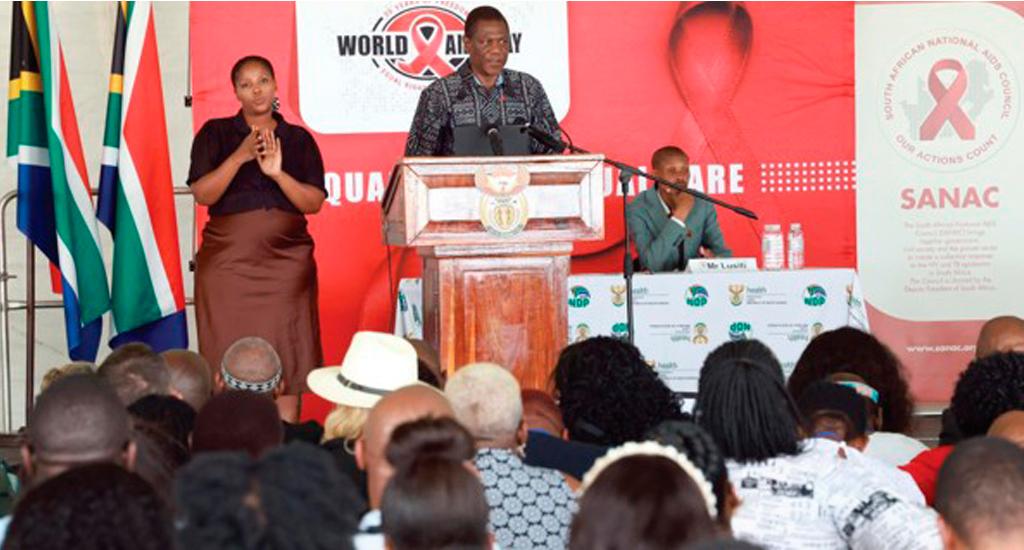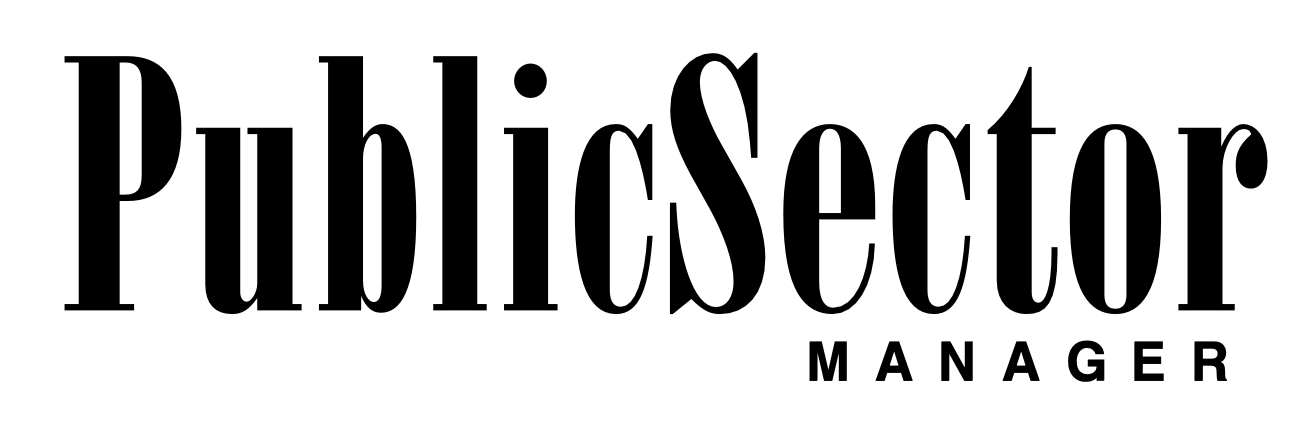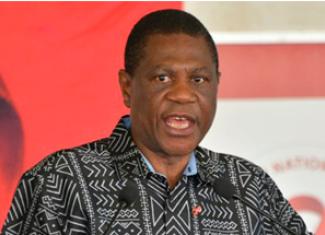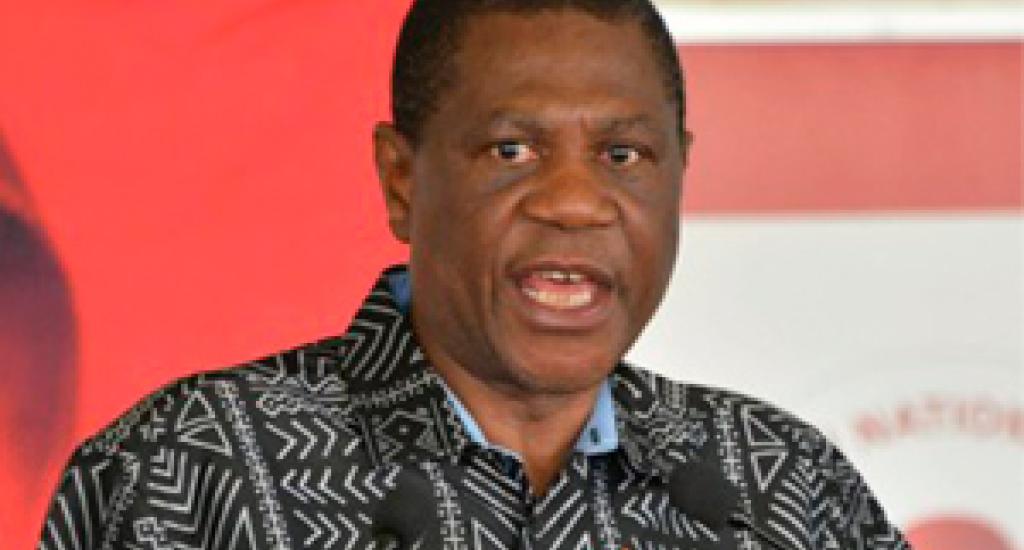South Africans urged to unite against HIV and Aids

The fight against HIV and Aids requires all South Africans to act together, says Deputy President Paul Mashatile.
Addressing the World Aids Day commemoration at the Sisa Dukashe stadium in Mdantsane, in the Eastern Cape, the Deputy President said while significant strides have been made in ensuring that 95% of people living with HIV know their status, the same cannot be said with respect to ensuring that 95% of people who know their status are on treatment and that 95% of people on treatment are virally suppressed.
“As of June 2024, only 79% of people who knew their status were on treatment, and only 93% of people on treatment were virally suppressed.
“As a country, we need to further increase HIV screening, diagnosis and treatment initiation while maintaining treatment adherence to keep viral suppression rates high. We urge all government departments to incorporate HIV and AIDS, and Tuberculosis [TB] in their workplace health and wellness programmes.
“In the same breath, we call upon political parties, trade unions, student organisations and other formations to encourage their members and supporters to know their HIV status and those who know their status to seek treatment and to remain on treatment.
“Our traditional leaders need to continue to use platforms at their disposal, such as community meetings, izimbizo, traditional initiation schools, funerals and such events, to encourage their subjects to test for HIV and TB,” the Deputy President said.
He added that government would continuously rely on various stakeholders, such as religious leaders to mobilise all men and women who worship, especially those who are HIV positive and have stopped treatment, to return to care.
Linking people to treatment
The Deputy President welcomed the initiative by the National Department of Health, working together with the South African National AIDS Council (UNAIDA) and development partners, to trace the 1.1 million people living with HIV and linking them to treatment.
He said linking them to treatment will enable the country to reach the Joint United Nations Programme on HIV/AIDS targets of 95-95-95. This is 95% of people living with HIV know their HIV status; 95% of people who know their HIV status are receiving HIV treatment and 95% of people on HIV treatment are virally suppressed.
“Let us all play our part and contribute to making this initiative a success,” he said.
South Africa must prioritise community-led responses and interventions to “guarantee that no one falls behind”.
“I would like to urge all the Premiers to make use of the provincial councils on AIDS to mobilise these sectors and others that are active in the provinces to help us find the 1.1 million people.
“All employers and employment organisations must come to the party. This is a genuine battle, and if we fail to combat HIV and AIDS, it will ultimately lead to our downfall,” the Deputy President said.
There have been many scientific advances in treatment and antiretroviral (ARV) therapy, which have allowed people to live long and productive lives.
Scientists are optimistic that improved treatment options can enhance prevention, and they are actively working on a cure and vaccine, he said.
“However, our country remains the epicentre of HIV and is among those with the highest TB burden. There are nearly 8 million people living with HIV, and TB remains the leading cause of death, claiming around 56 000 lives a year.
“We must always be cognisant of the fact that HIV is not only a public health crisis but also a developmental challenge and a human rights matter. Our approaches must be comprehensive, targeted, inclusive and geo-specific.”
Young women at higher risk
The Deputy President said HIV was prevalent among young people, especially adolescent girls and young women between the ages of 15 and 24, with a weekly record of 1 300 new cases. The infection rate among boys of the same age, however, is almost three times less, meaning girls are more vulnerable to HIV infection.
“A variety of factors, including the biological makeup of their bodies and their involvement in age-disparate relationships, contribute to this phenomenon.
Nevertheless, we need more interventions designed for adolescent girls and young women.
“I am encouraged by campaigns such as #ForeverWena, a movement that aims to empower youth to take charge of their sexual health. It encourages open, factual and informative discussions about healthy sexual behaviour and choices through its WhatsApp chatbot, a digital campaign available 24/7 that offers a confidential space for people to access vital information and support”.
Eastern Cape Premier Oscar Mabuyane said it was important for everyone to acquire knowledge about HIV and Aids.
“Our people deserve equal rights, equal care despite their status. This is an important day for us, let us have hope,” Mabuyane said.
He said the province would focus on young people. “We have a problem of high teenage pregnancy. Let us teach our children to be responsible,” he said.
Health Minister, Dr Aaron Motsoaledi, told the delegates that South Africa needed to put 1. 2 million people on ARV treatment.
“We need to work very hard to reach the 95%,” Motsoaledi said, referring to the UNAIDS targets.
World Aids Day is commemorated annually across the globe in solidarity with the millions of people living with HIV as well as to raise awareness about the status of the epidemic, with a view to encourage HIV prevention, treatment and care.
The 2024 theme: “Equal Rights, Equal Care” is a call for equal, equitable and dignified access to healthcare for all South Africans regardless of their economic status, gender, race or sexuality. – SAnews.gov.za




